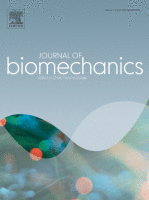AMTI Research Archive
AMTI’s instrumented equipment has been trusted by researchers worldwide for over 45 years to provide accurate and reliable data in support of their scientific achievements.

A little bit faster: Lower extremity joint kinematics and kinetics as recreational runners achieve faster speeds
Journal of Biomechanics, Volume 71
11 April 2018, Pages 167-175
Authors: Michael S.Orendurff, Toshiki Kobayashi, Kirsten Tulchin-Francis, Ann Marie Herring, Tullock, Chris Villarosa, Charles Chan, Emily Kraus, Siobhan Strike
Abstract: There appears a linear relationship between small increases in running speed and cardiovascular health benefits. Encouraging or coaching recreational runners to increase their running speed to derive these health benefits might be more effective if their joint level kinematic and kinetic strategy was understood. The aim of this investigation was to compare the peak sagittal plane motions, moments, and powers of the hip, knee and ankle at 85%, 100%, 115% and 130% of self-selected running speed. Overground running data were collected in 12 recreational runners (6 women, 6 men) with a full body marker set using a 12-camera Vicon MX system with an AMTI force plate. Kinematics and kinetics were analyzed with Vicon Nexus software. Participants chose to run at 2.6 ± 0.5 m/s (85%); 3.0 ± 0.5 m/s (100%); 3.3 ± 0.5 m/s (115%); and 3.7 ± 0.5 m/s (130%); these four speeds approximately correspond to 6:24-, 5:33-, 5:03-, and 4:30-min kilometer running paces. Running speed had a significant effect (P < 0.05) on peak kinematic and kinetic variables of the hips, knees and ankles, with peak sagittal hip moments invariant (P > 0.54) and the peak sagittal ankle power generation (P < 0.0001) the most highly responsive variable. The timing of the peak sagittal extensor moments and powers at the hip, knee and ankle were distributed across stance in a sequential manner. This study shows that running speed affects lower limb joint kinematics and kinetics and suggests that specific intersegmental kinetic strategies might exist across the narrow range of running speeds.
